Karate is a Japanese martial art based on the use of blows with the hands, feet, elbows and knees for self-defence. The expression means “empty hands”, precisely because practitioners don’t use weapons.
In this complete and up-to-date guide, we’ll explain everything about karate, including its history, principles, benefits, techniques, equipment and disciplines.
Check it out 👇
What is karate?
Karate is a Japanese martial art that focuses on the development of the body and mind. It is characterised by techniques performed with the hands and legs, always emphasising discipline, self-control and personal improvement.
Practitioners of the sport wear special kimonos called gis and follow a code of ethics that includes respect, humility and perseverance.
It is a fight that can be practised by people of all ages and fitness levels, ideal for promoting physical fitness, self-confidence and self-defence.
Why the name karate?
The name has its roots in the Japanese language and is made up of two kanji characters: “kara” (empty) and “te” (hand). Hence the expression “empty hands”.
This name reflects the fundamental characteristic of karate, which is a martial art in which practitioners use only their bodies and limbs to attack and defend themselves, i.e. without the use of weapons.
History of karate
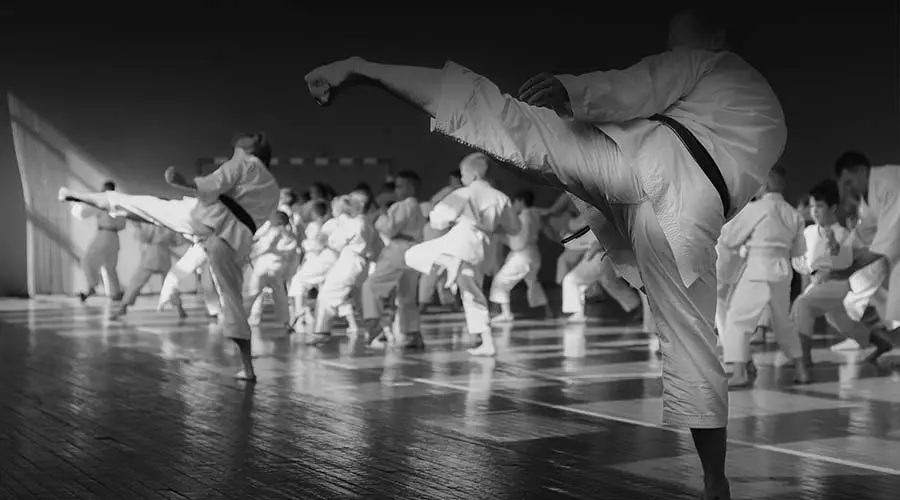
Karate originated in Japan, on the island of Okinawa, at the beginning of the 18th century. At the time, the government had imposed restrictions on the possession of weapons in the region, which led the locals to develop self-defence techniques.
To defend themselves against criminals, the locals developed an unarmed fighting style, mixing influences from indigenous and Chinese cultures.
Gradually, these self-defence techniques were formalised and organised into training systems, and the term karate (meaning “empty hands”) came to be used to describe this martial art.
The development of karate continued over the years, with different masters improving and systematising their strikes and movements.
At the beginning of the 20th century, the martial art began to spread throughout Japan and eventually the world, becoming a very popular fight.
Today, karate is practised by millions of people all over the planet as a form of self-defence, physical fitness and discipline.
Karate as a sport
Karate wasn’t born as a sport, but it became competitive towards the end of the 20th century. At that time, championships began to be held in Japan and, later, all over the world.
Today, the martial art has its own federations and organisations that regulate competitions and establish rules.
Karate tournaments are held at various levels, from local and regional events to national and international events.
In the championships, referees evaluate blows, movements, postures, gestures and other skills that make up the philosophy of fighting.
Sport karate is divided into two disciplines: kata and kumite. Each has different rules, characteristics and styles.
Karate at the Olympics
Karate’s debut as an Olympic sport took place at the 2020 Tokyo Games, which were postponed to 2021 due to the Covid-19 pandemic.
The martial art was included as one of the sports disciplines in the tournament. The athletes then competed in two categories: kata and kumite.
The joy was short-lived, however, as the International Olympic Committee excluded the sport from the 2024 Olympic Games in Paris.
Apparently, the Committee didn’t consider the sport relevant enough to keep it on the French programme, which frustrated thousands of enthusiasts.
Difference between karate kata and kumite
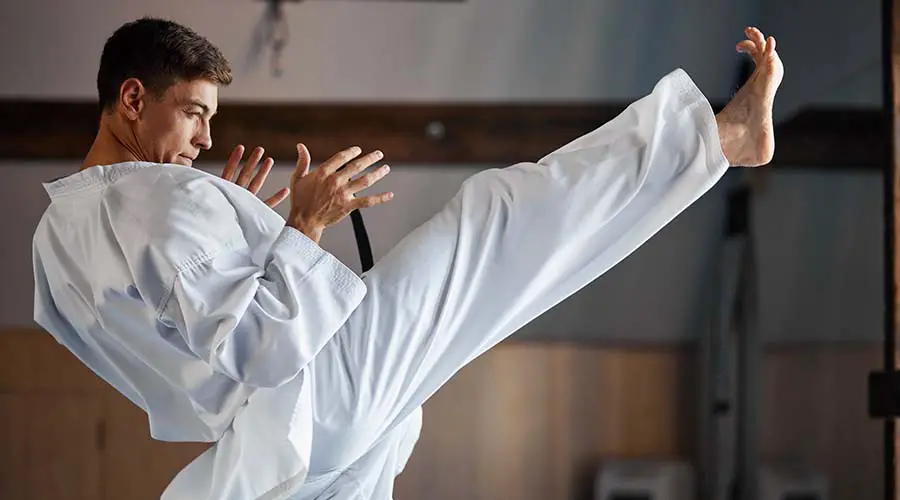
Kata karate consists of predefined sequences of movements that simulate combat against imaginary opponents. Practitioners perform movements to showcase the precision, form and fluidity of their techniques.
It is predominantly an individual sport, in which athletes are judged on their performances.
Kumite karate involves combats between two fighters. In this discipline, practitioners face each other in controlled duels, applying punches, kicks, elbows, knees, blocks and dodges.
The aim of kumite is to apply the techniques in an effective and controlled manner, scoring points by hitting the targets on the opponent’s body with valid blows.
So while kata emphasises the precision, form and technique of movements in individual exercises, kumite involves fighting, allowing the practical application of karate techniques in a combat context.
Both aspects are fundamental to the practice of karate, and practitioners often alternate between kata and kumite training to develop unique and consonant skills.
Karate kata rules
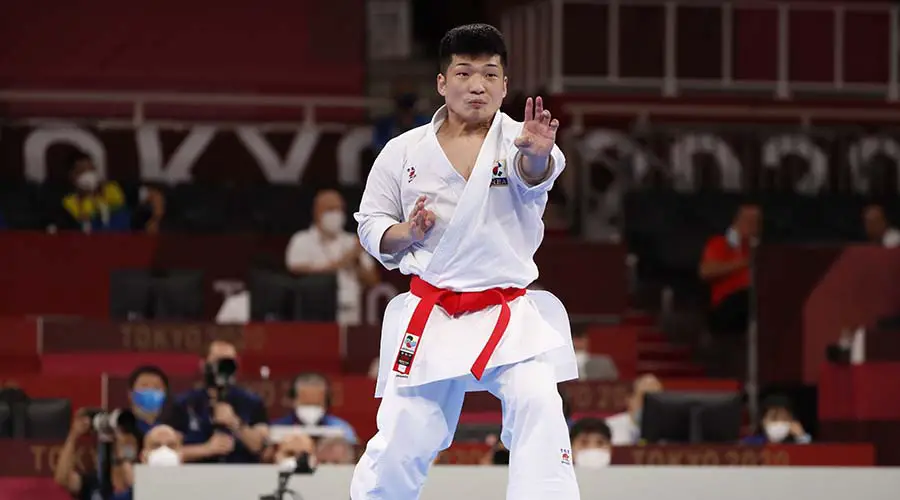
- Selection of kata – Competitors usually choose a specific kata (style) from a list approved by the organisation overseeing the competition. Each kata has a series of movements and techniques that must be executed with precision.
- Performing the kata – Competitors perform the kata on a tatami mat or designated competition area. They are judged on criteria such as precision, strength, speed, balance, fluidity and concentration.
- Loss of points – Karateka can lose points if they perform movements incorrectly or out of sync, become unbalanced, present themselves with a loose belt or cause a deliberate loss of time.
- Duration – Each kata has a specific duration that must be followed. Competitors must not exceed the time allotted for the execution of the kata. This varies according to the kata and the competition.
- Judging – A panel of judges assesses the execution of the kata and awards a score based on the competitor’s performance. Generally, karateka perform more than once. The panel therefore eliminates the highest and lowest scores to arrive at an average.
- Disqualification – In kata, karateka can be automatically disqualified if they perform an incorrect kata different from the one announced, pause too long in their performance, don’t greet the referees, drop their belt or exceed the time limit in their performance.
- Equipment – Competitors must wear the appropriate karate uniform (gi) and behave in a respectful manner during the execution of the kata. This includes greeting the judges before and after the kata.
Karate rules kumitê
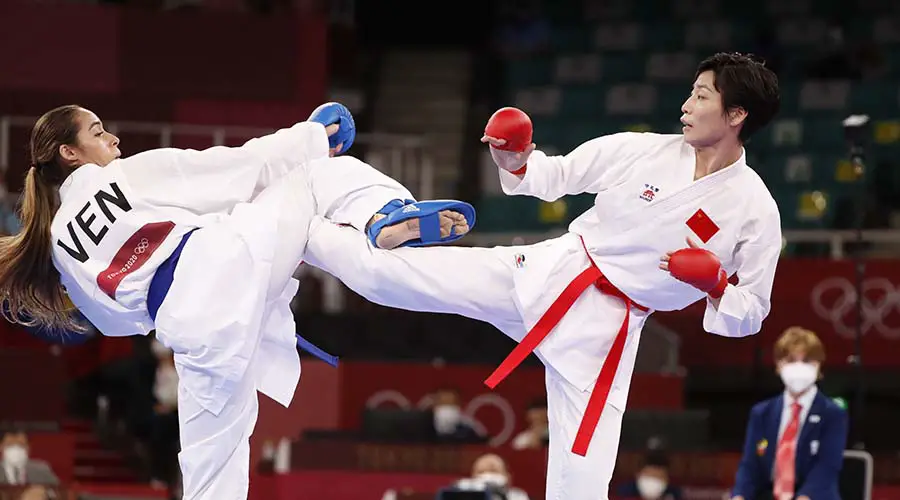
- Scoring – Competitors score points by hitting specific areas of their opponent’s body with controlled techniques such as punches and kicks. Points are usually awarded by a panel of judges and can vary according to the organisation, but are generally awarded for precise, well-executed blows.
- Target areas – Valid target areas for scoring include the face (excluding the eyes and throat), the torso (excluding the upper back) and the sides of the torso.
- Fight time – Kumite matches consist of just one round of three timed minutes.
- Winner – The competitor who has accumulated the most points at the end of the fight time or who manages to open up an eight-point lead is declared the winner of the fight.
- Types of points – As in judo, kumite blows are classified as yuko (1 point), wazari (2 points) and ippon (3 points). The difference is that in the case of ippon, the match does not end automatically.
- Confirmation of the point – Every time a fighter lands a blow, the referees stop the clock, discuss whether the technique was well executed and, if so, the karateka is awarded the point.
- Permitted techniques – The techniques used in kumite must generally be controlled and executed with the aim of scoring points, not hurting the opponent. Punches, kicks, elbows and knees are the main types of techniques allowed.
- Equipment – Competitors must wear protective equipment such as gloves, mouth guards, genital protectors, chest protectors and padded shoes to minimise the risk of injury.
- Penalties – Penalties are applied for unethical behaviour or breaches of the rules. This can result in points being deducted or even the competitor being disqualified.
- Types of fouls – The most common penalties are attacks in forbidden places, unnecessary use of force, deliberately leaving the mat, avoiding combat, not striking, grabbing the opponent and taunting.
List of karate moves
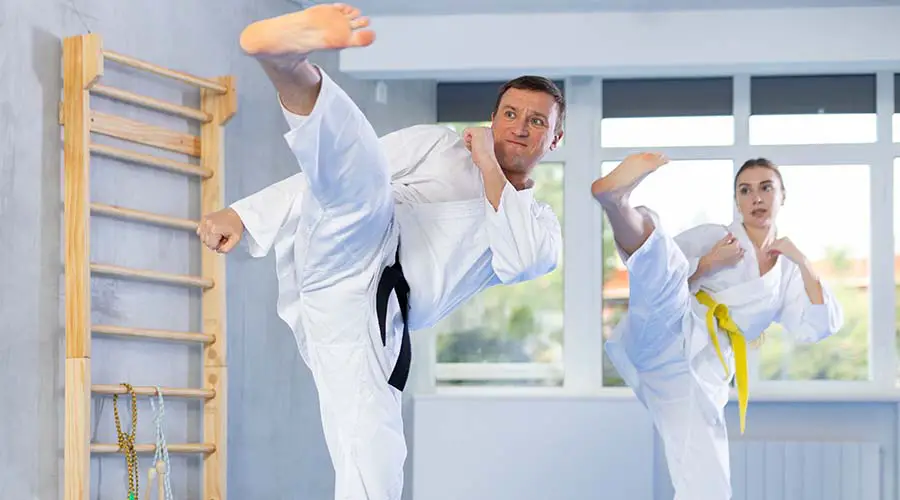
- Age-zuki – Punch upwards.
- Ura-zuki – Close punch.
- Kagi-zuki – Hook punch.
- Mawashi-zuki – Circle punch.
- Awase-zuki – U-shaped double punch.
- Yama-zuki – Wide U-shaped double punch.
- Heiko-zuki – Double parallel punch.
- Masami-zuki – Double scissor punch.
- Gyaku-zuki – Reverse punch.
- Oi-zuki – Walking punch.
- Nagashi-zuki – Dodging punch.
- Kizami-zuki – Punch with the front fist.
- Ren-zuki – Consecutive alternating punches.
- Dan-zuki – Punches repeated at different levels.
- Morote-zuki – Simultaneous punches.
- Mae Hiji-ate – Forward elbow strike.
- Yoko Hiji-ate – Strike with the elbow to the side.
- Ushiro Hiji-ate – Strike with the elbow backwards.
- Yoko Mawashi Hiji-ate – Circular strike with the elbow to the side.
- Tate Hiji-ate – Strike with the elbow upwards.
- Otoshi Hiji-ate – Strike with the elbow down.
- Mae-geri – Front kick.
- Yoko-geri – Side kick.
- Mawashi-geri – Circular kick.
- Tobi-geri – Jumping kick.
Karate belts
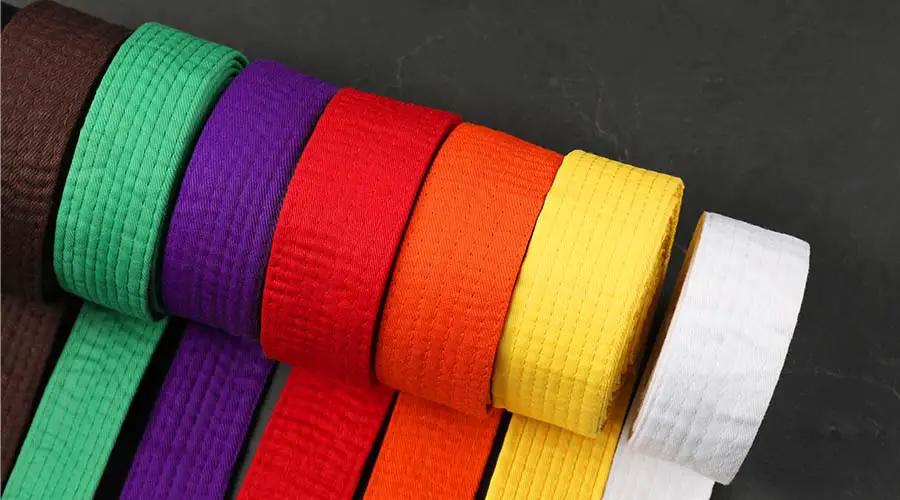
- White Belt – Unranked.
- Yellow Belt – 6th Kyu.
- Red Belt – 5th Kyu.
- Orange Belt – 4th Kyu.
- Green Belt – 3rd Kyu.
- Purple Belt – 2nd Kyu.
- Brown Belt – 1st Kyu.
- Black Belt – 1st Dan.
Now you know everything about karate, such as its history, disciplines, rules, main moves and types of belts. Did you like this content? Let us know what you think in the comments, as it’s very valuable to us 😊
For more interesting articles on football, basketball, volleyball, tennis and martial arts, visit our website every day!



